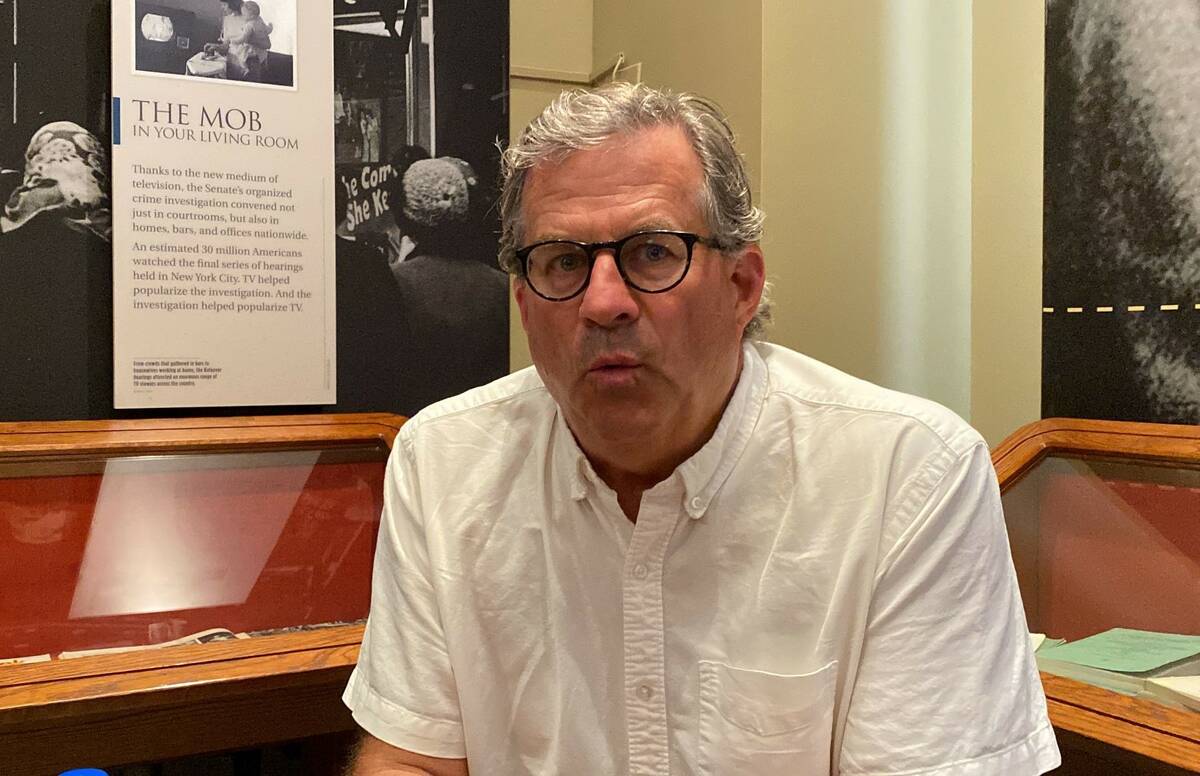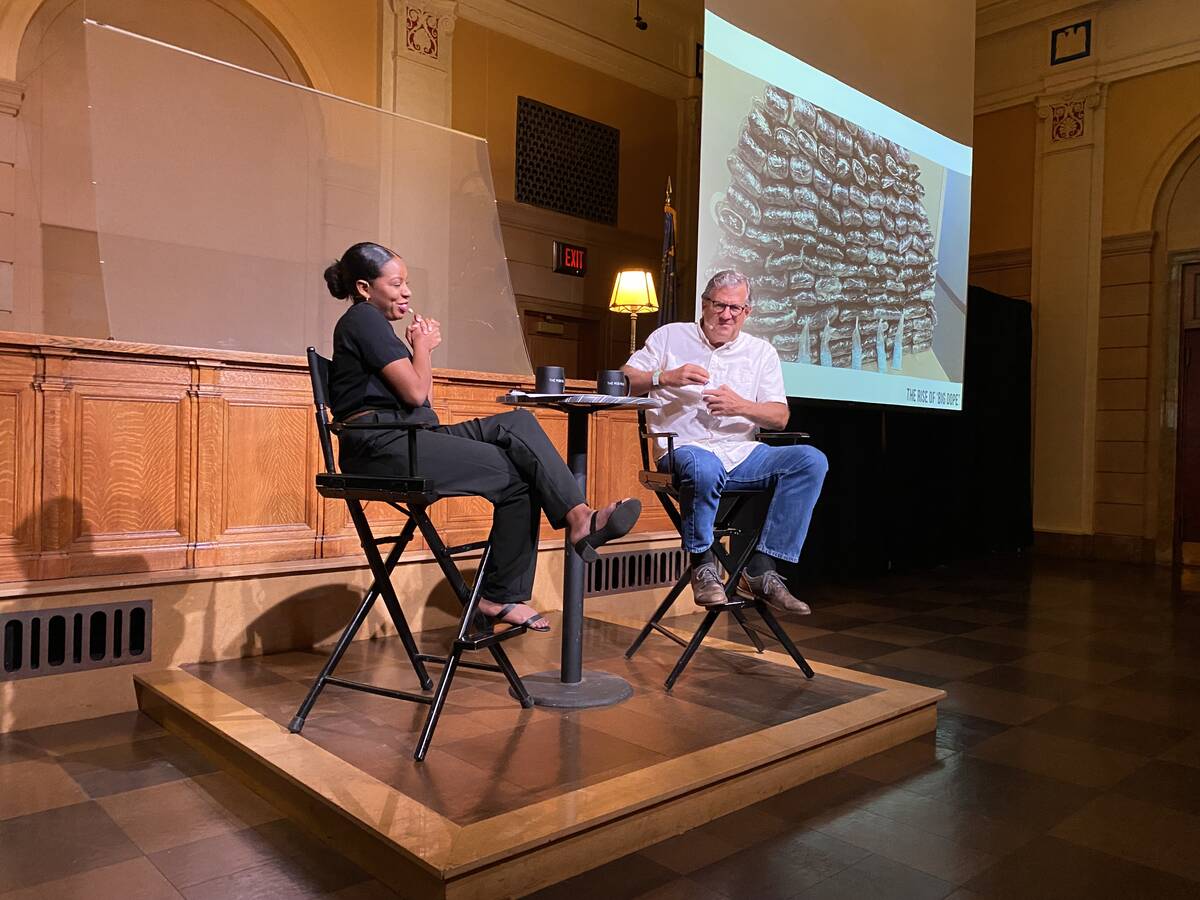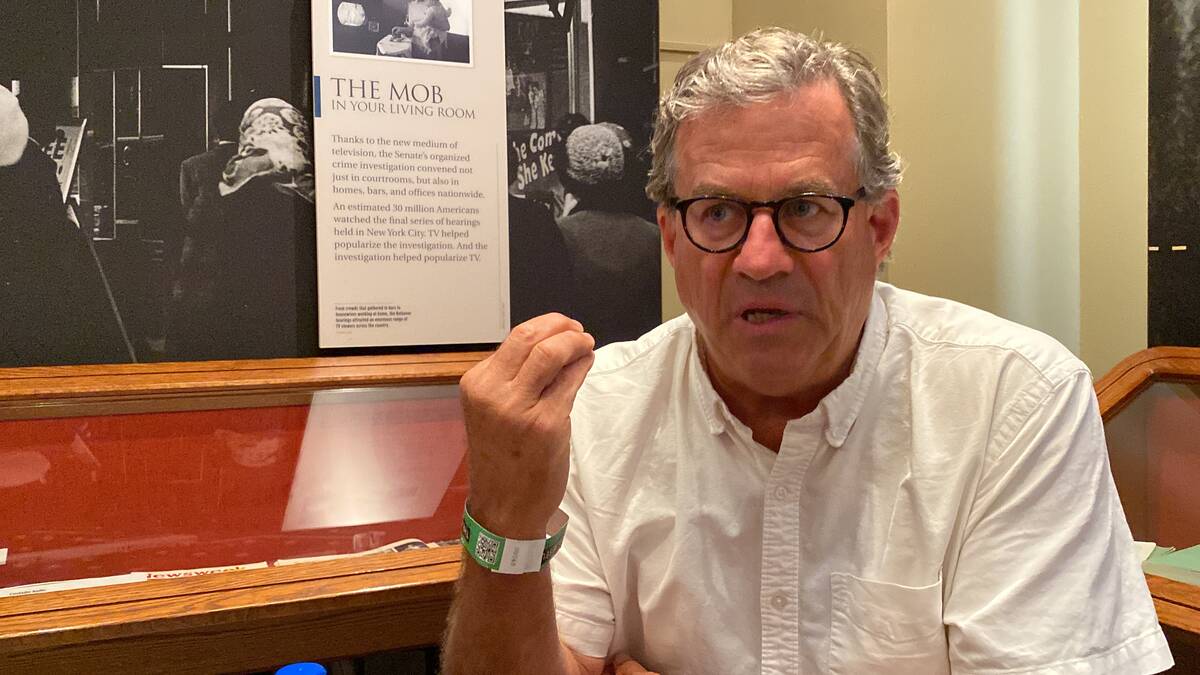Mob Museum hosts talk on opioid crisis, rise in US addiction
Most Americans don’t realize how widespread synthetic drugs like methamphetamine and fentanyl are, along with the quantities entering the country, according to an expert who has covered the opioid crisis for decades.
“We still have not caught up to the severity, the quantity, the enormous potency and the enormous prevalence of these drugs,” said journalist and author Sam Quinones, who led a discussion Tuesday at the Mob Museum. “Both in terms of media coverage, but I think really in terms of how to treat them.”
Quinones lived in Mexico for 10 years, worked for publications such as the Los Angeles Times and wrote two books on the subject.
He spoke about the history and spread of methamphetamine and fentanyl in America. Shakala Alvaranga, director of public programs at the museum, moderated the event. The hourlong discussion ended with questions from the audience.
He said in researching for his 2021 book, “The Least of Us: True Tales of America and Hope in the Time of Fentanyl and Meth,” he discovered a change in how methamphetamine was being manufactured around 2009 altered the drug from giving a euphoric experience to one that leads to symptoms similar to schizophrenia.
“In order to get someone into treatment, you have to be able to communicate with them,” Quinones said. “You can’t communicate with that person. That person’s jabbering away, is out of his mind.”
He said that fentanyl made its way into the U.S. as manufacturers and traffickers took advantage of Americans’ obsession with pills and painkillers. Now, fentanyl is added to other drugs like cocaine and methamphetamine to create more need from users.
“Once you get them on hooked on fentanyl, they have to buy from you every single day,” Quinones said. “It’s a customer expansion drug is what it really is for a lot of dealers.”
Overdose deaths from fentanyl increased to 71,238 in 2021 from 57,834 in 2020, according to the Centers for Disease Control and Prevention.
Southern Nevada deaths
In Clark County, at least 218 people died from a fentanyl overdose in 2021 — about one-fourth of all drug overdoses — according to the coroner’s office. Fentanyl was the cause of death for at least 181 people in 2020 and 64 people in 2019, according to coroner data.
The Metropolitan Police Department created a task force in 2021 to investigate overdose deaths and to pursue murder cases against dealers.
“There’s no plants involved here. It’s just chemicals, and both meth and fentanyl are both synthetics. They’re made entirely from chemicals,” Quinones said. “You can make them all year round. There’s no seasons, there’s no sunlight you need, no irrigation. You don’t need any of that.”
Quinones said prosecuting dealers is a valuable tool in taking away the incentive of dealing fentanyl.
“There is really a very strong incentive once somebody adds it to a drug and people start getting addicted to fentanyl,” Quinones said. “Everybody has to start adding fentanyl to their drugs, so there’s almost a free market push as well.”
Quinones said America needs to rethink its approach to dealing with the opioid crisis because the “nature” of drugs has changed.
He said jails should rethink how people are held for drug offenses. He said a jail in Kentucky has experimented with changing jail from a place to sit and wait to be put back onto the street to becoming the first step on the path to sobriety.
Most importantly, he said, the country’s sense of community needs to be strengthened.
“Community is our best defense,” Quinones said.
“It’s what allowed us as a species to survive all these years because we evolved that way. We evolved to need each other.”
Contact David Wilson at dwilson@reviewjournal.com. Follow @davidwilson_RJ on Twitter.




















